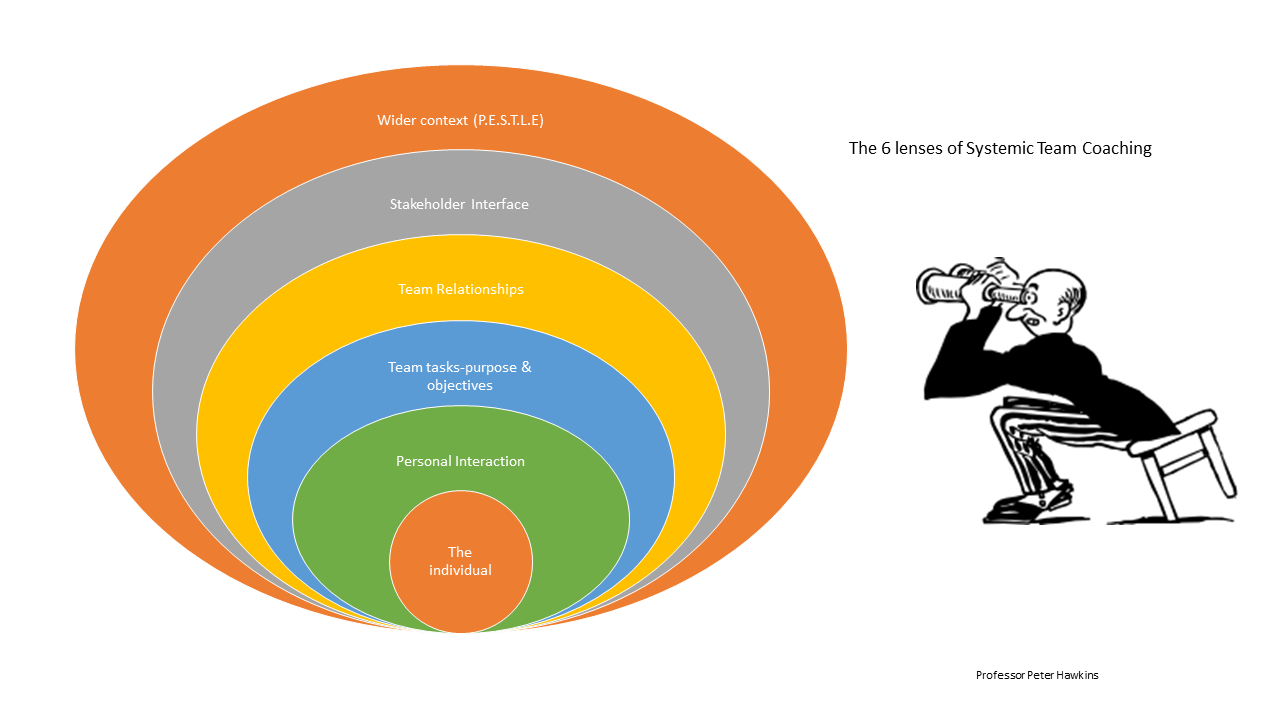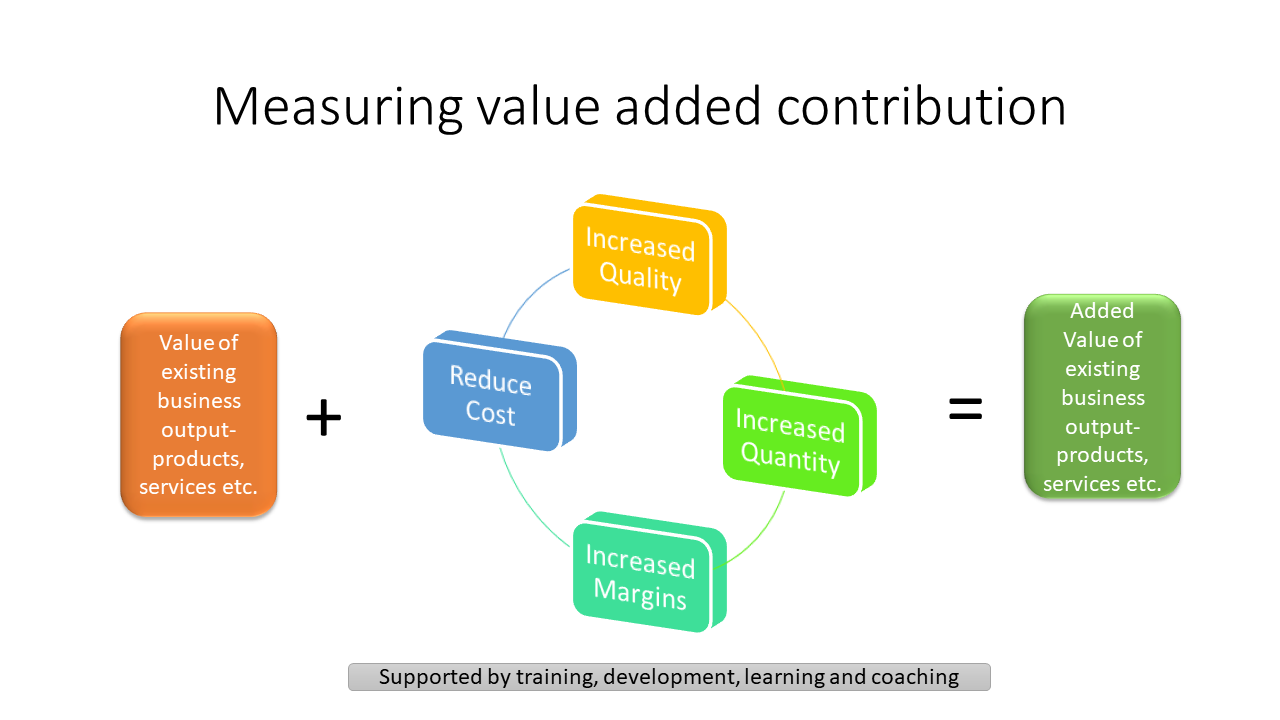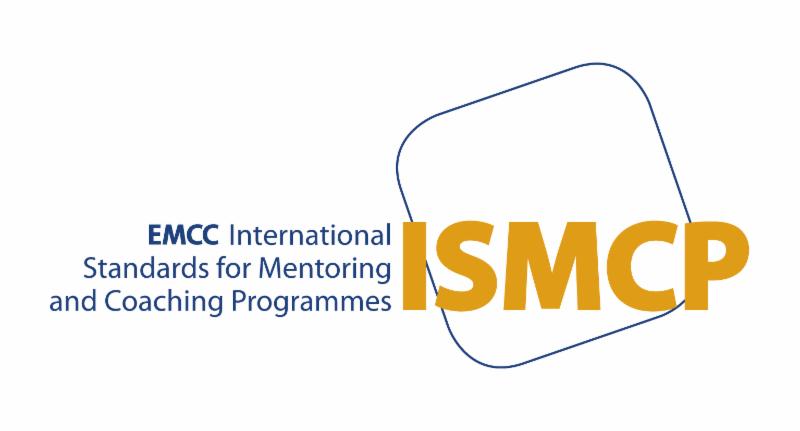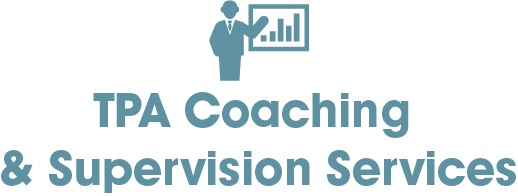Advantages of creating a coaching culture
- by Tim Anderson
- •
- 18 Feb, 2019
- •
Why create a coaching culture?

With so much noise surrounding coaching these days it is hard to distinguish between good practice within coaching and mentoring and interventions that are merely responding to a fashionable trend.
Coaching has grown of age over the past 30 years, with many organisations using both internal coaches and mentors, as well as using external experts to deliver outstanding individual results. Yet despite this maturity within the coaching and mentoring area, I still come across pockets of excellence of business coaching that have failed to move from isolated examples into long term and sustainable methods of doing business. The main reason for this I believe is the lack of published and substantiated success of how coaching and mentoring can impact effectively on corporate objectives.
Most coaching and mentoring interventions appear to remain at the 1:1 level. This is not surprising as coaching and mentoring is often provided to support the individual, however the importance of the individual’s development should have a wider impact than on just their own performance and ability.
For coaching to be able to demonstrate how it benefits the greater success of the organisation, we need to consider the knock on affect they have within their role, their department and ultimately on how they contribute to the success of the business.
Professor Peter Hawkins talks about the systemic approach to coaching where a coach considers the wider implication of a clients challenge when supporting in a 1:1 session. This can be illustrated below.

By considering the wider effects of the outcomes from the coachees activity, we can start to identify how the coachees improvements is impacting on organisation objectives and consider how such improvements might be having an impact on:
· Increased quality
· Increased quantity
· Increased margins
· Reduced costs.

Combining the systemic consideration regarding impact on the individual who is being coached and how that impacts their immediate team, their department, the organisation and their clients or benefactors, we can ensure that an individual’s development can have a positive impact all round.
By considering the impact in terms of output we can identify where the value add is of the coaching intervention which in turn can highlight tangible and evidenced value to the organisation.
Why is this important?
Over the past 6-7 years I have been involved with several projects where implementing a coaching and mentoring programme have delivered some great results.
During this period, I have witnessed and have had described to me numerous stories where great examples of coaching and mentoring schemes are delivering real differences to people’s lives and organisational output.
These examples have come from a diverse range of organisations in commercial and not for profit environments and have included various levels of participants ranging from challenging youngsters, often struggling with life in general; those new into line management roles and seeking to make a success of their careers; senior business leaders with grey hair and “many years of doing things the traditional way” but still open to an alternative method to deliver leadership results and qualities.
Many of these schemes have claimed to have shown a fantastic improvement on performance and on individual behaviours, they also claim to have played a significant role in change related projects. Regrettably however many have struggled to prove the return on investment to major stakeholders and are often subject to the same fate that is bestowed on the HR and training budget when times get tough; i.e. cut.
I have also seen and shared stories with champions of coaching and mentoring programmes who have created some fantastic schemes only to learn that they have fallen in decline, or worse still, been cancelled soon after the champion left the organisation.
So how best can we work toward building successful programmes that not only succeed today, but have the ability and structure to become part of the organisational fabric or, “the way we do things around here”?
Coaching and mentoring provide excellent techniques as part of an organisation’s portfolio of development methodology. They are predominantly 1:1 intervention, although good use is sometimes made of group coaching techniques. It is the 1:1 nature of coaching and mentoring however that has caused a challenge when linking back an individual’s development to the wider context of the organisation.
Katherine Tulpa, CEO and founder of the Association of Coaches wrote an interesting foreword for “Supervision in Coaching”, where (as of first publication 2011) she refers to coaching as coming of age as a profession. She suggests that the next phase is to establish this young, emerging technique as a method of management that is globally recognised. This can be achieved by the appealing delivery of both the coachees and the coaches on-going development using the experience we gain as coachees and coaches to further enhance our skills in self-development. We should add mentors and mentees to this statement.
This suggests a methodology where self-reflection and experiential learning can begin to drive coaching and mentoring from the 1:1 and into a wider improvement cycle.
I believe where the struggle has been to date is around the challenge of being able to take coaching from 1:1 development and linking this back to business objectives.
Katherine Tupla raised the issue so practicing coaches can raise the profile of coaching and mentoring from 1:1 into a management methodology. She was particularly suggesting supervision can support this process and I would take this a step further and build supervision and support of the coaching and mentoring into part of a management improvement cycle, maybe incorporating this back into the annual review process.
How can we do this?
There are some exciting and valuable reasons for an organisation to consider developing the ad-hoc or pockets of coaching success into a method for doing business across the organisation, not least of which is to support developing whole departments and not just individuals.
Six great reasons
1. Coaching is a proactive approach and not remedial.
All too often, individuals have been referred to coaching and mentoring schemes because they are under performing and as such, coaching and mentoring has been viewed within an organisation as offering a remedial service. This is a shame as many outstanding performers view coaching and mentoring as a method to become even greater.
If we consider coaching from a sporting context, most great athletes use coaches to help them surpass even the great things they are currently achieving. Outstanding business leaders regularly use coaches to extend their success too, take a look at this you tube clip: https://www.youtube.com/watch?v=PclmUyPqqpo
Make sure coaching becomes the way you do business and is made available to all people within the organisation either as formal 1:1 session or as a style of management.
2. Modern day training and development does not live within the classroom
Thousands of pounds and thousands of man hours have been spent on typical classroom-based training. However, this 20th Century development model has been proven to fail in delivering long term and sustainable performance improvement. In my blog on the 70:20:10 training method, I describe methods of how coaching and mentoring can support real time development methods that have dramatic results on staff performance. http://www.salesimprovementservices.com/the-702010-training-model-is-most-effective-for-learners/
Don’t just train your staff, ensure all training and development creates a change in how they do things.
3. Coaching is demanded as a communication style for all stakeholders
When we talk about communication, it is important to acknowledge that an ability to communicate well, can help you to build positive working relationships with your key stakeholders and this is key to organisational success.
Developing your team communications skills is not just an internal function either, if you can help develop the ability of your key Stakeholders to communicate well you can create an environment where a two-way open and honest dialogue can create the foundation of a great relationship.
We need to be able to develop our workforce, so the organisation can create the conditions that enable collaboration, shared experience, mutual learning and use the shared capability of our teams toward innovation?
By understanding our stakeholder needs we can truly deliver on our corporate goals: https://www.tpacoaching.co.uk/great-conversations-are-the-underpinning-key-to-success
Ensure your people are communicating effectively and as co-creators where safe and healthy conversations are the key to empowering your team to interact with their peers and wider stakeholders and create incredible results collectively.
4. Improve executive presence.
Taking on a new role, increased scope in an existing role, operating in a constantly changing competitive environment - all of these are next level situations for senior managers and leaders according to Scott Eblin in his book, The Next Level: What Insiders Know About Executive Success.
He describes managing at the next level and describes the ability of letting go of traditional traits and concentrating on some core leaderships skills which he has gleaned from over 1,000, 360-degree assessments.
Taken from the publication he suggests that the NEXT LEVEL MODEL OF LEADERSHIP PRESENCE consists of three core levels of ability being Personal Presence, Team Presence and Organisational Presence. He then characterises areas to develop and areas that we might need to drop if we are to be successful as a modern-day leader.
Take a look at these articles around this topic at:
https://www.tpacoaching.co.uk/next-level-model-of-leadership-presence
https://www.tpacoaching.co.uk/increasing-executive-presence-might-be-the-key-to-leadership-success
Ensure your leaders can create the environment where their team are full of “go to people” who can deliver on your objectives and cause.
5. Reverse mentoring provides a two-way development culture
So, what is reverse mentoring? Reverse mentoring refers to an intervention in which older executives are paired with and mentored by younger employees. I have seen this work well in a recent initiative where younger employees were paired with senior managers to support the senior teams understanding of the cultural shift within the UK toward a more open and diverse range of ethnic backgrounds.
Many of us grey haired executives, now into our late 50’s and early 60’s have probably benefited from mentoring ourselves when we first entered the workplace. In my own circumstance I had a truly inspiring mentor in the mid 1970’s who shared his experience with me. These were mainly from ideas he had received from his own mentor several years earlier, who had no doubt received support and advice from a mentor too .…., get the picture. Many senior managers will have gained inspiration from those who learned skills and developed values from things happening in the early to mid-20th century.
Reverse mentoring can be a fantastic way to inspire the older generation and in parallel provide a truly inspirational way of engaging the younger workforce with the senior executives of an organisation. This gives the younger team members a feeling of importance and belonging whilst supporting the older team to embrace modern values and share such themes with the future leaders.
6. Inbedding a coaching framework to highlight coaching as the thing we do.
Command and control management and leadership is no longer effective in this fast-moving world. People need to be agile and respond to changing conditions on a moment by moment basis. For this they need a different type of management. One that empowers and facilitates.
Creating culture, finding the right people, managing them to do great things and solving problems creatively and systematically are challenges faced by all organizations. Coaching can help your leaders and managers achieve more through their teams by creating culture, specifically through creating coaching cultures by developing a coaching management style which among other things:
· creates empowerment
· increases engagement
· develops people and performance
· improves creativity
· raises responsibility in employees
· avoids confrontation
This is the advantage of creating a coaching culture.
Creating a framework for success
As a coach or mentor working with a coachee or mentee, we need to consider the whole person and not just the skill or behaviour trait identified as the learning objective. We should then agree during an induction phase within the coaching process, how we might measure the impact from several perspectives.
Performance is one area but what about well-being, life balance, health etc. What is the effect of the change/ improvement on peers, line managers, staff that work for the coachee or mentee?
We need to consider then how this is then reported back to the fee payer, if not the coachee?
How is the intervention measured in terms of the success of the organisation or coaching programme if one exists?
A good review process should link performance back to the job role and identify mutual development opportunities that support the job owner so they can be successful in their role. The individual is part of a department that in turn is part of an organisation that in turn is striving to deliver the identified and agreed stakeholder needs.
As part of this management process an organisation might need to consider how coaching and mentoring, along with the other range of support initiatives on offer to the team, is producing the desired effect and results required to meet corporate and stakeholder needs.
To support an organisations endeavors to deliver and maintain an effective coaching environment the *EMCC (The European Mentoring & Coaching Council), have developed a framework of best practice:
ISMCP Award.

(ISMCP) is an independent accreditation awarded to organisations designing, delivering and evaluating mentoring and/or coaching programmes either ‘inhouse’ or externally. It is an integral and essential step on the path to establishing the professional credibility and status of good mentoring and/or coaching programme management, ensuring programmes are:
· Thoughtfully designed
· Systematically managed
· Significantly contributing to the development of participants, strategic drivers of the organisation and wider stakeholder objectives
For more information on the ISMCP award visit: http://www.salesimprovementservices.com/coaching-services/emcc/
*About the EMCC. https://www.emccouncil.org/
The EMCC exists to develop, promote and set the expectation of best practice in mentoring and coaching across Europe and beyond, for the benefit of society.
Benefits of a coaching culture
Moving coaching and mentoring from a stand-alone, and often ad-hoc 1:1 intervention process into a strategic topic will help deliver coaching, mentoring and other training interventions into being part of corporate development in line with corporate objectives.
It will help support other topics such as recruitment, staff retentions, corporate change and stakeholder satisfaction.
It will help your organisation meet the 21st Century business challenges such as economic austerity, recession, social responsibility, organisation agility and help build trust and openness with our stakeholders, an area that seems to have been forgotten by our banks, our politicians and celebrity role models.
It will do so by:
· Linking coaching and mentoring to business drivers
· Encouraging everyone in the organisation to participate and thrive from being coached.
· Provide a structure to promote and make available great coaching and mentoring to all team members.
· Manage and promote success of coaching and mentoring interventions so it can remain at the heart of organisational values and ethics.


In these challenging times I would like to share some thoughts with you why being people focused will have longer term benefits once we move out of lock down and toward more favourable times.
The term of the month seems to be furlough and I understand the need for businesses of all shapes and sizes to take whatever steps they need to take in order to survive however we would urge all organisations that have needed to take these measures not to fall into the trap of “out of sight out of mind”.
Never before have we had an opportunity as business owners and organisational leaders and managers to show that our people focused cultures are indeed what we do and how we act. I wonder how we might meet this challenge.
Taken from an excellent guide from the Chartered Institute of Personnel and Development ( CIPD) to an explanation on the rules and regulations around furloughed workers here we can provide a brief explanation furloughed working regulations.

I wanted to share a coaching session I provided to a client recently who brought to their coaching session a topic on how to support them in an up and coming bi-annual performance review. It was an interesting use of a coaching session and it got me thinking, why do we still carry out performance and staff reviews in methods created in the last century?
Employees the world over have been subject to the annual appraisal for as long as I can remember, I think I attended my first one back in the late 1970’s, I am not sure they have moved on much since then!
Back to my coaching session though. The coachee had suggested we look at areas such as how she could communicate a rich and powerful story that could describe many of the great things she had achieved since her last review and which were not captured by the standard KPI’s that everyone was measured against in the organisation. She wanted to include feedback on the things she had done since she had been promoted late last year, so her manager was aware of her growth. And she wanted to widen the theme, so the conversation did not major on merely what she had done this past month or so.
My client wanted to explore with me how to make less visible things visible; she wanted to include items such as being a team player, being seen as trustworthy by her staff, showing up to work with the best version of herself on offer and how this delivered on her being considerate and respectful of the team members. What she was eluding to was how to get the strengths in soft skills onto the agenda?
All too often the agenda that is set for the review is to meet the needs of the manager and that of the organisation, ticking off an event in the calendar and ensuring that key business drivers are being met. This is fair but also one sided and whilst it might support short term deliverables the business needs, it does not address the team members own career aspirations very well, neither does it address some of the harder challenges facing many organisations today in terms of recruiting, retaining and developing their workforce for the 21st Century challenges they face.
Two or three other areas we considered exploring were around the review process itself and how we might be able to keep key things top of mind continuously and not just at review time. How best to do this?
We considered the difference between performance reviews and development reviews? How can the attendee ensure both performance (an historic measure) and developmental conversations (taking a future perspective) take place within the meeting? We considered how to raise awareness of how the softer challenges were important in terms of reaching the organisational goals.
I was impressed with the approach my coachee had taken to preparing for the forthcoming meeting and that she had considered bringing this topic to coaching, she also mentioned how she had talked with her peers which in turn had added to the depth of information she was using to be able to best plan and approach the meeting. Clearly there was some deep thought from my client around how best to take advantage of the forth coming review. She acknowledged and accepted that the three key areas her company measured would need to be addressed but she wanted this to be a two-way process.
On reflection of the session I considered several things, firstly I wonder how well her manager was preparing for this meeting? I have had several coaching sessions with senior managers who have shared with me that whilst they always intend to approach the annual reviews with a greater level of planning, by the time review season hits, other dynamics have taken preference to the allocated planning time and so they end up with more of the same as last year.
I also considered the power of regular reviews; these are opportunities to learn and plan for both the manager and their employees. I am reminded of Bernard Marr description of why we measure from his fantastic book Managing and Delivering Performance ( p141) where he suggests we measure for three reasons, firstly because we do not trust our team will perform ( pretty negative), secondly because we have to (compliance) or thirdly, because we want to provide rich information that can help us improve. Of course, we all aspire to the third of Marr’s reasons, but I wonder how well we manage the review process as managers and how rich and varied is the quality of the data we use when carrying out such reviews?
It occurred to me too that most organisations offer reviews as a type of snapshot. There is nothing wrong with this in theory, and an annual review is better than no review at all. I noticed my client’s company were carrying out reviews twice a year and I know other organisations where I coach that do so each quarter. Each organisation uses a variety of tools to collect data that can be used during the review such as 360% surveys, performance impact data on internal and external customer satisfaction, team retention. But generally, this data is also provided as a snapshot. And yet, with the advances in technology and data integration it must be feasible to provide accurate and up to date information that each employee can use on a weekly or daily basis to help identify improvement areas. By providing up to date and regular data to our teams we can ensure the performance reviews are not the dominant process, or worse, continue to be the only way we support our employees. By providing data that our teams have regular access to, the employee can take ownership of their own development as part of their regular routine.
With the frightening statistic that 87% of employees worldwide are not engaged at work (Gallup 16) and considering that 50% of all millennials in the workplace are asking for more feedback and further, where many of the workforce in 2020 are working remotely and often with more flexibility with working hours, I wonder what your organisation is doing to support your workforce and helping them to feel included, invested in, ensuring they feel part of the future plans of the organisation and, most importantly, supported in being the best they possibly can within their respective roles?
I am interested to hear from you on processes your organisation is adopting to meet these people challenges, and what technology are you using, or considering using, to help support these challenges going forward.
It would be great to learn more.
And on a final note, one of the frustrating elements to a review is when the team member does not come prepared, here is one amusing example that springs to mind.
https://www.youtube.com/watch?v=IkYUDQCYGHA&t=80s
Working as a coach and as a consultant I have been quite amused by the number of organisations that have used “Vision 2020” as a title when launching new strategic initiatives. As we fast approach the end of the decade and reach 2020 I wonder what organisations have achieved in terms of supporting their teams and leaders to deliver on their “2020 visions”?
The time for 2020 vision is fast approaching and is accompanied by challenges such as:
· 87% Of employees worldwide are not engaged with their work (Gallup 2016)
· Leaders are increasingly required to support staff in complex and multicultural environments.
· Senior executives are managing teams that are often working remotely and across time zones.
· Many are managing teams where they do not have direct authority.
· Dispersed workforce's are having to be managed within the lens of cost reduction and reducing the organisations carbon footprint.
· Compliance continues to be a challenge where legislation is produced locally, causing duplication of cost across nations and borders.
· Where the influence of technology is enabling personal values of different culture and generations across the globe to consider life with a different and fresher mindset.
· Where ease of communication and connectivity has invigorated topics such as personal health, well-being and the sustainability of our planet.
· And where wealth creation and imbalance regarding the distribution of such wealth is now far wider than 20 years ago and yet technology continues to make the world smaller and as such leads to tension and dissatisfaction.
So, what is the role of the 21st Century leader? Certainly, the modern leader is no longer required to be the knight on the white charger, fixing all in front of them, but perhaps now is required to be the facilitator of change.
When considering the past, present and the future we need to ask:
How well did we prepare managers and leaders to work in such a VUCA world where change is the norm?
What support mechanisms are delivering the outcomes we NEED to see today?
What initiatives and development methods will support our leaders in contributing to the success of our respective organisations in the future to help meet such challenges?
As we approach a new decade, it might be a great time to stop, reflect and consider what organisations need from their leaders and senior executives.

Hitting the glass ceiling, being over-looked for promotion
or perhaps you are just head down and working hard and looking forward to
promotion……. but getting nowhere?
Getting to that next level may not be all about performance, hard effort and working long hours.
According to Harvey J Coleman from his book Empowering Yourself, how well you do your job may have very little to do with how successful you are in your professional career. Coleman suggests that how well you do your prescribed work will account for only about 10% of your overall success.
Coleman suggests that career success is based on the 3 key elements of Performance, Image and Exposure (PIE):

For those of you old enough you may recall the BT adverts of the early 1990’s which featured the late Bob Hoskins where he told the viewer “It’s good to talk”!
But how well do we really communicate, sure we have the corridor conversations with colleagues whilst we are at work. And we have countless meetings with internal and external contacts.

He argues that developing these core traits often requires an executive to drop certain habits and clear the path to concentrate on developing good behaviours
In this last of three articles around increasing executive presence I will consider the impact that Organisational Presence can have on your ability to become a great leader.
Eblin highlights the following areas he feels should be developed by a manger and the areas a great leader should drop in order to thrive on organisational presences:

In the second of three articles around increasing executive presence I will consider Team Presence as an essential core competence.
Eblin considers team presence in terms of team reliance over self-reliance, defining what to do rather than telling how to do it and finally to shift from responsibility for many results toward being accountable for many results and allowing your team to share and prosper in the departments success.
So how can coaching, training and development of you as a leader enable you to develop the correct environment to deliver modern-day leadership services to your team and wider stakeholders.
Within this article I will share my thoughts and experiences around team presence and some of the methods I have been able to use to help executives enhance their ability in this area.




